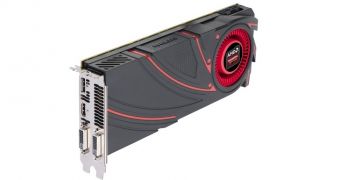The price of a product rises according to how strong demand is. This is a fact of life in a capitalistic world. Things can still go overboard though, suspiciously so, and the sudden correction of prices can be even worse.
I'm afraid that Advanced Micro Devices will be subjected to suspicious frowns on the part of its customers for a while.
And I mean both the people who bought one of its graphics cards this year, and those that are still on the fence in regard to their possible purchases.
The reason is simple: the prices of its Radeon R9 graphics adapters went through a pretty serious overhaul yesterday.
The new price tags sound like a godsend, but they'll no doubt irritate everyone who acquired a video board in the first quarter of 2014.
After all, wouldn't you be annoyed if you paid nearly a thousand dollars for a product, only to see it drop to half of that just a couple of months later?
And yes, that's exactly what happened with the Radeon R9 290X, the flagship board. It started out at around $550 / €550, but quickly climbed to over $900 / €900. Now, it's back to under $600 / €600.
Meanwhile, weaker boards like the R9 280 experienced price reductions of around $30 / €30. The whole R9 line was riding on some sort of high from the demand on the part of Bitcoin miners, among other things. At least that's what certain parties said was happening.
Why did the price cut happen now?
This is the big question, next to why it happened at all. AMD seemed more than content letting its OEMs and retailers basically squeeze customers of up to twice the usual cash. What changed?
We know that there is no new competition on NVIDIA's part. In fact, the only video card that the latter needs to release is the GeForce GTX Titan Z dual-GPU monster, the one that sells for twice what AMD wants for the R9 295 X2 but works no better (on current drivers anyhow).
Maybe the consumer base finally started to wise up to the super-overprice trick after five months. Or maybe Jim Keller made a pointed comment or two about the matter now that he's finally back with the company (even if he is, supposedly, only going to focus on APUs, not GPUs).
Honestly, I'm not sure which of those possibilities is more depressing, since they both imply that the whole “let's sell the video cards for ridiculous amounts” tactic verged on price-fixing. Not that it's all that unusual on the tech market, or any market, but still.
It leaves the question of why the price overhaul is happening now, though. We haven't heard of any incoming product releases from either GPU maker.
Well, we have, if the AMD Crystal Series count, but those are low-end R5/R7 GPUs, unlikely to affect the sales of the R9 series at all. And the GTX 780 Ti-level video card with stacked memory isn't likely to prompt something like this on its own.
Maybe AMD is preparing a “refresh” of the R9 collection, like Intel refreshed the Haswell CPU line. It would make sense, now that TSMC has announced a delay for the 20nm process, forcing both AMD and NVIDIA to redesign their new architectures for 32nm instead.
Maybe Advanced Micro Devices will just overhaul the existing architecture somehow instead of doing what NVIDIA is doing with the Maxwell. If that's the case, the boards will be out by year's end, and the existing line needs a stable price scheme by then. Otherwise, there won't be a concrete price difference between the generations, making the full transition complicated.
It would all fit, since we already know that NVIDIA will release something along the lines of high-end Maxwell by the end of the year.

 14 DAY TRIAL //
14 DAY TRIAL //